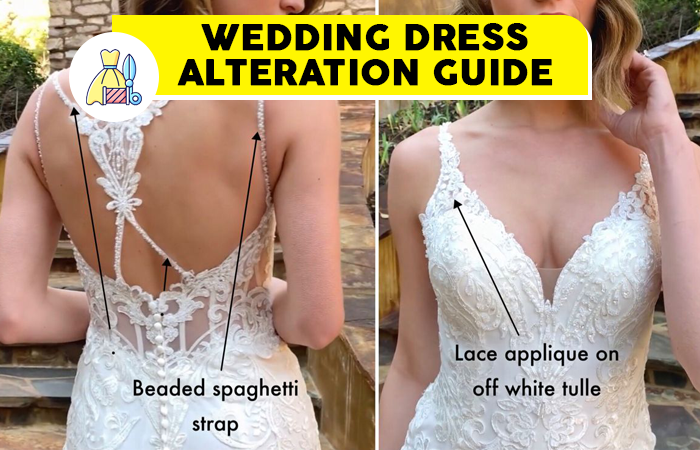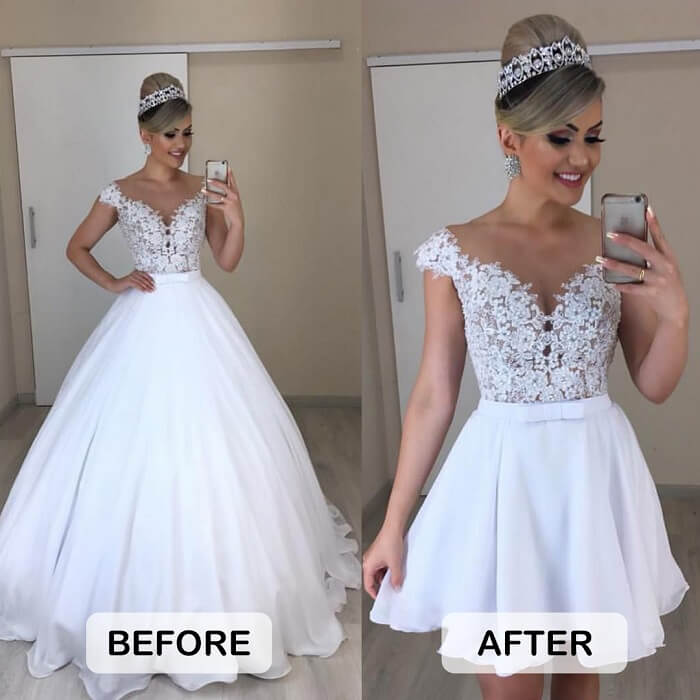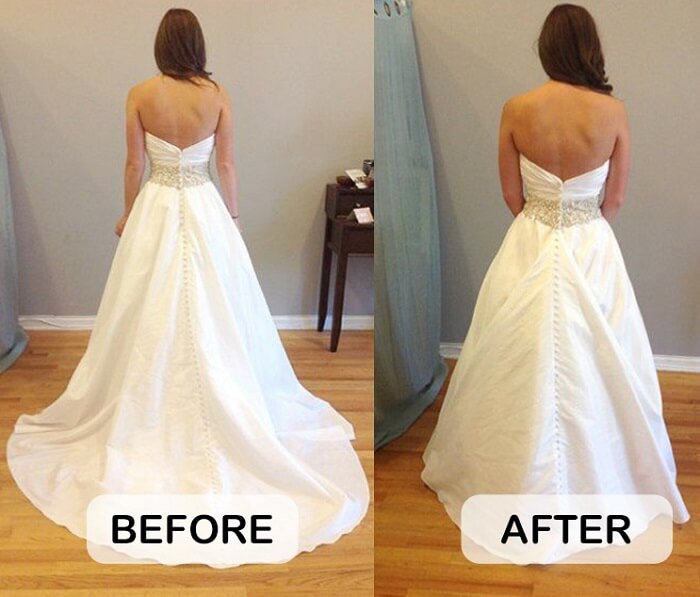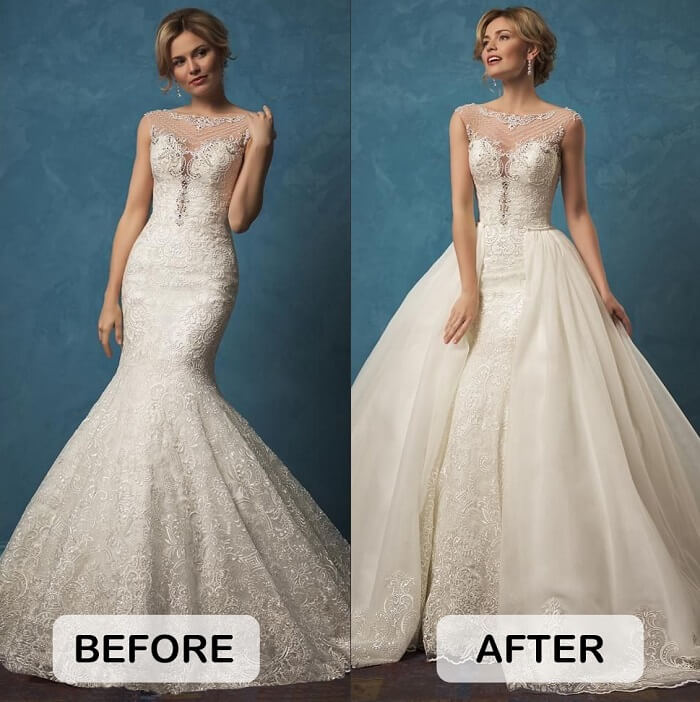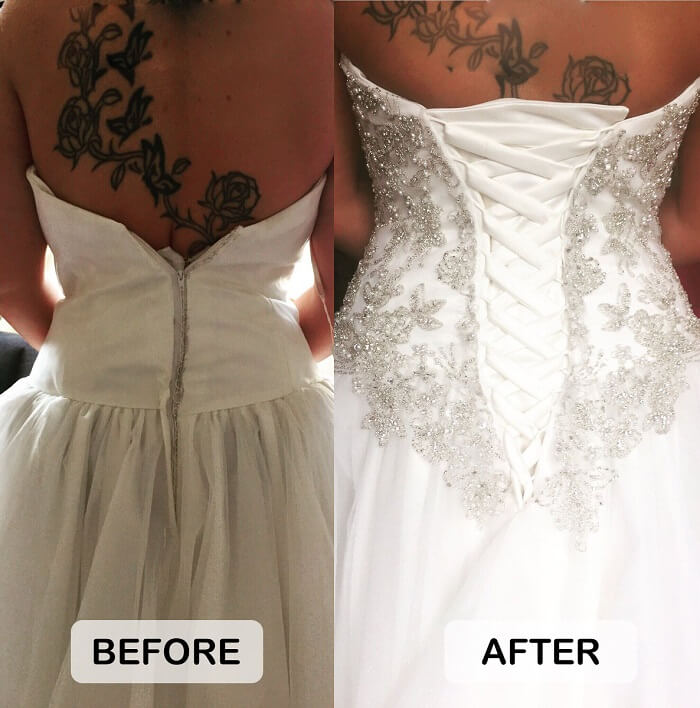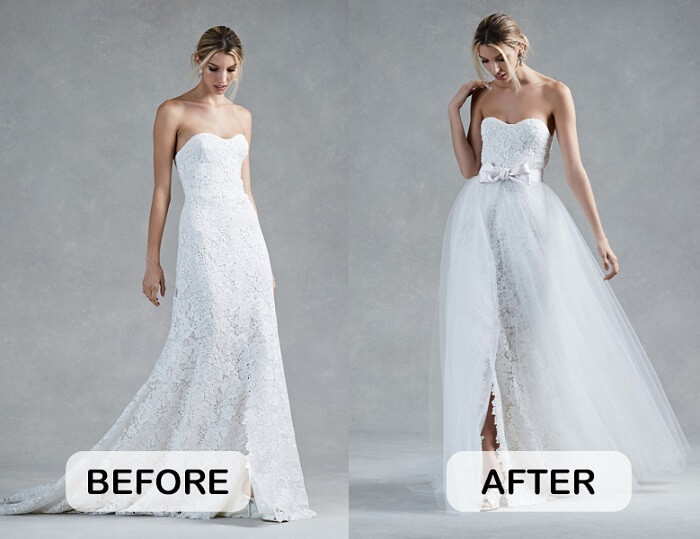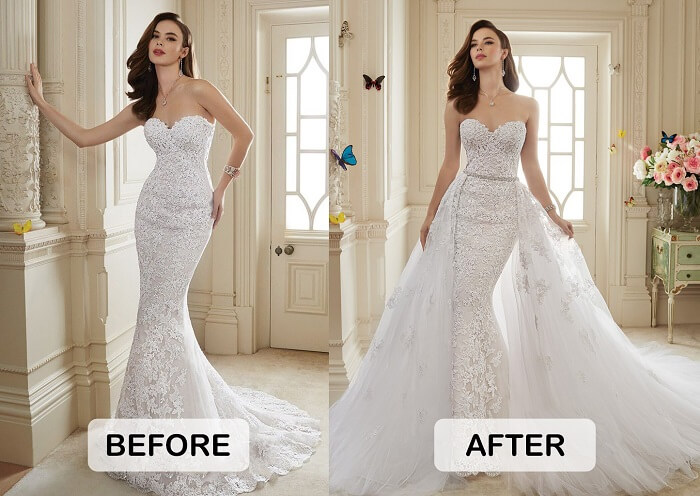Every bride wishes to look like a vision on their wedding day as they walk down the aisle in the perfect wedding dress which fits like a glove and flatters their curves beautifully. But basking in dress bliss might require you to pay a visit to the seamstress so that alterations can be done as required. Every bride is unique and the same versatility can also be seen in the type of dress they choose for their D-day.
Wedding is your ultimate stage for showing off that stunning gown which took months to find and a wardrobe malfunction is the last thing any bride would wish for on this day. Herein lies the importance of altering every dress for ensuring the dream fit. In most cases, the bridal boutiques have an in-house seamstress. Alternatively, they might recommend a trusted tailor for getting the job done. Today we are going to walk you through an alteration guide of wedding dresses for ensuring a seamless fit.
Altering is must
Wedding dresses usually come in generic sizes and can rarely match the bride’s body. You can take an example of a gown that fits beautifully around the hips but is too loose around the bust region. Once you decide on a particular style, the bridal salon will run comparisons between the designer’s size chart and your measurements for ordering the closest gown size. Brides should be mentally prepared to alter the dress once it arrives at precisely fitting their figure.
9 Different Types of Alterations for Wedding Dress
- Schedule 3 Dress Fittings
- Enquire About In-House Seamstresses
- Hemline Shortening
- Adjusting The Train Loop
- Tucking The Waist & Hips Portion
- Strap Shortening
- Taking In Around The Bust Line
- Back Alterations
- Adding A Waist Stay
1. Schedule 3 Dress Fittings
Seamstresses and bridal salons recommend a minimum of three wedding dress fittings. The first one is scheduled roughly three months prior to your wedding date, the second prior to a month and the final before a two-week mark. An additional fitting might also be required for extensive customizations like a train or long sleeves.
2. Enquire About In-House Seamstresses
In-house wedding alterations are always time-saving and yield better results as the seamstresses are likely to have worked on similar styles before. Often shops offer a small discount for getting the alterations done.
3. Hemline Shortening
The hemline of wedding dresses usually runs extra long for fitting the taller brides and thus petite ladies have to seek out alteration. Hemline shortening cost depends on the gown layers and whether any lace requires to be taken off prior to being added back to the final hem length. Brides who wish to rock classical style can go for hem grazing the floor.
4. Adjusting The Train Loop
Train loop refers to the small ribbon loops which are attached with the dresses train for being lifted up while moving around. These come in two variants – the long one which is held in your hand while dancing and the short one which buttons up under your derrière. The later is more requested as it allows both your hands to remain free as you take your pick amongst different styles like under bustle or French bustle, over bustle, waterfall bustle, Austrian bustle, etc.
5. Tucking The Waist & Hips Portion
Adjusting the side seams of dresses is quite common. While shopping for your wedding attire, you need to carry out a discussion with the salesperson regarding how much alteration is possible for the dress size. It is comparatively easier to take the dress in as you don’t have to worry about the old seam showing. Ensuring that your wedding dress fits properly around the bust, waist and heaps can help you nail that dream silhouette as you walk down the aisle.
6. Strap Shortening
Wedding gowns usually have longer straps which can suffice the requirements of different brides. Altering shoulder straps is very easy and isn’t very cost-intensive.
7. Taking In Around The Bust Line
When it comes to chest size, store brought dresses are pretty generous and the shape often needs to be altered so that you don’t have to suffer embarrassment while stooping down. While this alteration might be trickier than others, it can be attained once you discuss it in detail with your seamstress.
8. Back Alterations
Irrespective of the style of your wedding gown, you can alter its back easily. Brides who wish for an open back can have some material taken away. Ladies looking for modest options can add a lace back to their strapless gown. While requesting alterations you should always provide inspiration pictures to your seamstress.
9. Adding A Waist Stay
Waist stay refers to an elastic band or ribbon which ensures a snug fit on your waist. It is always recommended to add a waist stay to your strapless gowns as it keeps your dress in place so that you can move around freely.
Wedding Dress Alterations Tips:
-
- Brides need to bring their D-day undergarments and shoes to every fitting for obtaining the perfect fit. The right kind of strapless bra or Spanx can make a massive difference in your look. Carrying along these accessories allows the bride to gain a clear understanding of how they will look and feel on their wedding day. You need to wear your wedding shoes while the tailor adjusts the hem. If you haven’t decided on the wedding shoe yet, then you can imagine wearing the same while altering your hem length.
- Bringing a friend along with tags good vibes to the fitting experience as the whole process might otherwise be pretty stressful. Apart from acting as an extra set of eyes, friends and family can also make your feel more comfortable while documenting those BTS selfies as priceless memories.
-
- Brides often make the mistake of ordering a small size just to gain weight-loss motivation for their wedding day. Around 40% of all wedding gowns come with built-in corsets which help to tighten or loosen it whenever required. If you are trying to lose weight, then it’s important to reach your target weight at least six weeks prior to your wedding for starting with the alterations.
- For taking the stress out of the entire alteration process, you should buy the dress at least 10 months prior to the wedding date. This will leave you adequate time to get the fittings and tailoring done to perfection.
Wedding dress alterations can be of two types – basic hemming and the addition of details. The former constitutes of fine-tuning the dress fit, adjusting the sides, and hemming the length so that the gown can both complement and accentuate the bridal silhouette. Adding details can be both cost and time-intensive. Some popular examples are adding sleeves, off-the-shoulder straps, lace appliques, train length, buttons, beading, and a bustle. The first fitting is usually very time-consuming as your tailor will have to assess all the alterations. Following fittings require less time as the dress edges closer to the ideal fit.
Cheryl Carter
Latest posts by Cheryl Carter (see all)
- Custom Leather Patches for Hats: Elevate Your Style by Choosing the Perfect - February 27, 2024
- Types of Curtain Pleats: Explore and Elevate Your Interior Design - February 6, 2024
- Korean Perm Hairstyles Male: Get the K-Pop Look - November 24, 2023
